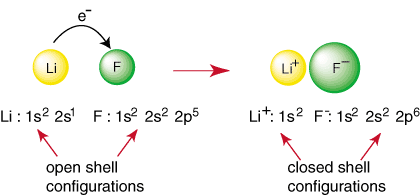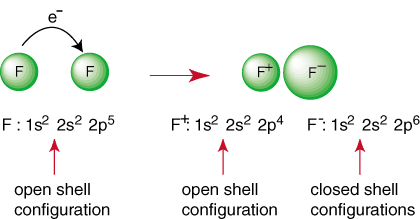Please wait while we process your payment
If you don't see it, please check your spam folder. Sometimes it can end up there.
If you don't see it, please check your spam folder. Sometimes it can end up there.
Please wait while we process your payment

By signing up you agree to our terms and privacy policy.
Don’t have an account? Subscribe now
Create Your Account
Sign up for your FREE 7-day trial
By signing up you agree to our terms and privacy policy.
Already have an account? Log in
Your Email
Choose Your Plan
Individual
Group Discount
Save over 50% with a SparkNotes PLUS Annual Plan!
 payment page
payment page
Purchasing SparkNotes PLUS for a group?
Get Annual Plans at a discount when you buy 2 or more!
Price
$24.99 $18.74 /subscription + tax
Subtotal $37.48 + tax
Save 25% on 2-49 accounts
Save 30% on 50-99 accounts
Want 100 or more? Contact us for a customized plan.
 payment page
payment page
Your Plan
Payment Details
Payment Summary
SparkNotes Plus
You'll be billed after your free trial ends.
7-Day Free Trial
Not Applicable
Renews July 12, 2025 July 5, 2025
Discounts (applied to next billing)
DUE NOW
US $0.00
SNPLUSROCKS20 | 20% Discount
This is not a valid promo code.
Discount Code (one code per order)
SparkNotes PLUS Annual Plan - Group Discount
Qty: 00
SparkNotes Plus subscription is $4.99/month or $24.99/year as selected above. The free trial period is the first 7 days of your subscription. TO CANCEL YOUR SUBSCRIPTION AND AVOID BEING CHARGED, YOU MUST CANCEL BEFORE THE END OF THE FREE TRIAL PERIOD. You may cancel your subscription on your Subscription and Billing page or contact Customer Support at custserv@bn.com. Your subscription will continue automatically once the free trial period is over. Free trial is available to new customers only.
Choose Your Plan
This site is protected by reCAPTCHA and the Google Privacy Policy and Terms of Service apply.
For the next 7 days, you'll have access to awesome PLUS stuff like AP English test prep, No Fear Shakespeare translations and audio, a note-taking tool, personalized dashboard, & much more!
You’ve successfully purchased a group discount. Your group members can use the joining link below to redeem their group membership. You'll also receive an email with the link.
Members will be prompted to log in or create an account to redeem their group membership.
Thanks for creating a SparkNotes account! Continue to start your free trial.
We're sorry, we could not create your account. SparkNotes PLUS is not available in your country. See what countries we’re in.
There was an error creating your account. Please check your payment details and try again.
Please wait while we process your payment

Your PLUS subscription has expired
Please wait while we process your payment
Please wait while we process your payment

Properties of Chemical Bonds
Why should atoms bond at all? In nature we find that some elements like He, Ne, and Ar are never found bonded to other atoms whereas most other elements are only found bonded to other elements. What makes the noble gases so special? The answer lies in their closed shell electron configurations. Because the valence shell of a noble gas is completely full, it cannot accept another electron into the shell. The nucleus is positively charged and pulls on the electron, so the loss of an electron from a noble gas is unfavorable. Therefore, like real nobility, the noble gases do not want to do anything at all--that is, noble gases are unreactive because they have filled valence shells.
Any element other than a noble gas has an open shell configuration, which is unstable relative to the configuration of a noble gas. Non-noble atoms react to form bonds in an attempt to achieve a closed shell electron configuration. For example, when a lithium atom and a fluorine atom meet, as shown in , lithium can achieve a noble gas configuration, 1s2, by donating an electron to fluorine which also achieves the noble gas configuration 1s22s22p6:

The above reaction represents the formation of an ionic bond. The negatively charged anion, F, and the positively charged cation are held together in the bond by the attraction of unlike charges as dictated by Coulomb's law. You may have asked yourself why two fluorine atoms don't come together to perform the following reaction:

Even though the reaction may appear to be favorable because of its production of a closed shell species, there is a way to have both F atoms achieve a noble gas configuration. By sharing their electrons, each fluorine atoms can have a complete octet in its valence shell. Such a sharing of electrons is called a covalent bond and will be discussed in depth in a separate section.
The way bond properties were chosen to characterize bonds have a historical basis. Scientists made their first rational attempts to describe bonding by looking at data they could collect about bonds. We too will look at the experimental data on bonds to try to analyze bonding.
Perhaps the most useful aspect to know of a bond is its strength. Weak bonds are easily broken and molecules with such bonds are fairly reactive. Conversely, strong bonds are difficult to break and give rise to stable molecules. Therefore, it is sensible to define bond strength as the amount of energy needed to break a chemical bond. Trends in bond strength show that homoatomic bonds (those formed between atoms of the same element) tend to be strong. But going across a row in the periodic table, the trend in bond strength may not be regular. For example, period 2 elements have the following strength order: Li-Li > Be-Be < B-B < C-C < N-N > O-O > F-F. This irregular trend is repeated in period 3 homoatomic bonds. If we look at bond strength data, we also notice that the Li-F bond is several times stronger than the F-F bond or the Li-Li bond. It is not important for you to memorize such trends. We use them to show that whatever theory of covalent bonding we propose must account for these observations.
Please wait while we process your payment

